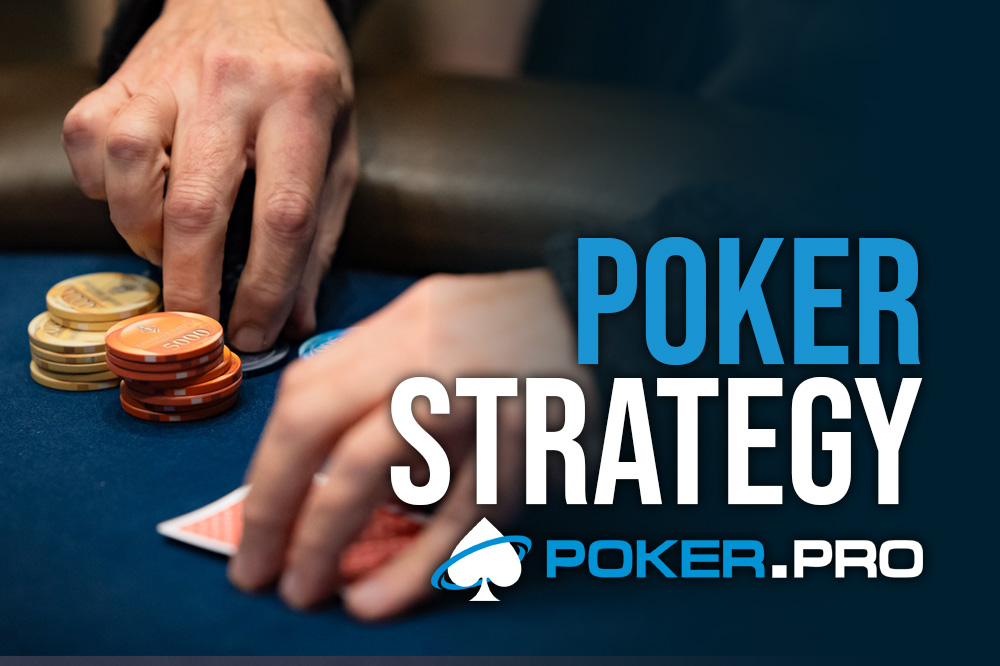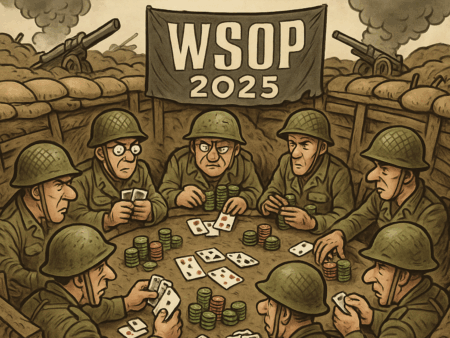
In most poker strategy discussions, the out-of-position (OOP) player is considered to be at a disadvantage. Position allows you to act last, gather more information, and apply pressure more effectively. Yet there are certain situations where being OOP flips from weakness into opportunity. One of the most intriguing examples arises deep in tournaments with high blinds, when both players have checked through the flop and turn. Suddenly, the OOP player often seizes the initiative with a decisive river bet and walks away with the pot. Why does this dynamic occur, and how should you approach it as both the aggressor and the defender?
- Read more: Denial Bet Masterclass: The Modern Denial Bet System
- Read more: Board Texture Mastery: The Missing Edge for Pro-Level Play
Why the OOP Player Gains Initiative
When the flop and turn are checked, both ranges appear weak. Neither player has demonstrated interest in building the pot, and the in-position player has declined two opportunities to bet. This sequence heavily caps their range: strong top pairs, overpairs, and even medium-strength made hands are often bet earlier. The OOP player, acting first on the river, is then presented with a rare advantage – the ability to polarise their hand by betting big. The story they tell is simple but powerful: either they slow-played strength or they’re bluffing. In practice, many opponents assume the first scenario and fold far too often.
The pressure is magnified when blinds are high and stacks are shallow. Every pot matters, and an outsized river bet can threaten a meaningful chunk of the in-position player’s remaining stack. Faced with risking tournament life on a marginal bluff-catcher, many players choose the safe route and fold.
The Hidden Risks of Overuse
Despite its appeal, this move is not without risk. In-position still holds the informational advantage: they saw the OOP player check twice, and they know that range is capped too. Good opponents deliberately check back strong hands on earlier streets, waiting to induce this “desperation” river stab. Against such traps, the OOP player’s automatic bomb becomes very costly. Moreover, at equilibrium, solvers reveal that both players are supposed to bluff the river aggressively in this spot, not just OOP. The advantage is therefore situational rather than absolute.

Playing the Spot as OOP
When you find yourself out of position in this situation, discipline and hand selection are essential. Focus your bluffs on holdings with good blockers – for example, having the ace of a missed flush suit, or a card that reduces the likelihood of your opponent holding a strong hand. Use large sizing, often 75-100% of the pot, to maximise fold equity. Medium bets simply invite lighter calls. Most importantly, don’t fall into the trap of stabbing every time the action checks through. Balance your play by sometimes giving up and checking down weak holdings.
Playing the Spot as In Position
If you are in position and the board has been checked twice, you should be prepared for a high-frequency river stab. The adjustment is twofold. First, widen your bluff-catching range: ace-high, king-high, and small pairs often become profitable calls against opponents who stab too liberally. Second, protect your own range by checking back stronger hands on earlier streets. By mixing in slow-plays with top pair or even overpairs, you ensure that you can call or raise the river bet with confidence. This discourages the OOP player from automatically firing away and helps you trap their bluffs for maximum value.
For Example
Imagine a blind-versus-blind battle in the late stages of a tournament. The big blind (30 BB effective) calls the small blind’s min-raise with Q♦7♠. The flop comes J♣5♦2♠ – both players check. The turn is the 9♥ – again, check-check. The river falls 4♣, completing no draws of significance.
At this point, the OOP big blind knows both ranges are weak. They hold nothing more than queen-high, but they also know the small blind declined to bet twice on a dry board. A pot-sized river bet here polarises the big blind’s range: either they slow-played a strong jack or better, or they are bluffing. Against most opponents, the small blind folds ace-high and low pairs, surrendering the pot.
Now imagine the small blind had checked back a hand like A♦J♠ on the turn. On the river, they face the same pot-sized stab. Instead of folding, they snap call and punish the over-bluff. This demonstrates why balance matters for both sides: OOP cannot bluff blindly, and IP must sometimes protect their range by slow-playing earlier streets.
The out-of-position river stab after two checked streets is a fascinating weapon. In the right conditions, it transforms positional disadvantage into a surprising source of leverage, especially in tournaments with high blinds where fold equity is maximised. But like any tool, it can be overused and punished by observant opponents. As OOP, the key is selective aggression with strong blockers and large bets; as IP, the key is anticipation, bluff-catching, and protecting your range with occasional traps. Mastering both sides of this dynamic ensures that whether you are first to act or last, you can turn this common scenario into a long-term winning play.
























